A rugged, waterproof, underwater-capable digital camera opens a whole new world of photography opportunities to any shutterbug regardless of skill level. Having the luxury of shooting in rain, snow, high altitude, and underwater without worrying about camera damage is not only fun and addicting, but also allow you a shoot in unfamiliar environment every single time.
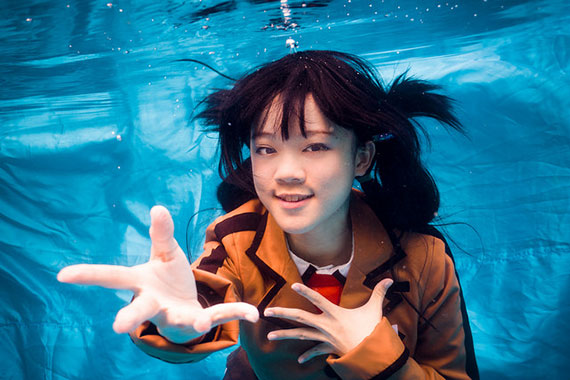
Photo by RICO Lee; ISO 250, f/5.6, 1/160-second exposure.
Here are a set of 10 frequently asked questions for first-time underwater or waterproof digital camera buyers and my advice for each.
Q1 – Why Should I Consider A Waterproof Camera? There Are Plastic Waterproof Cases For Regular Digital Cameras Anyway!
A1 – A rugged, waterproof, underwater digital camera allows you to take pictures no matter where you are in whatever the condition. Think of all the fun and memorable images you can capture on the beach, or during a ski trip. How about when you spent days climbing a mountain to reach that epic peak? Having a small, rugged, always-ready camera with you all the time is just priceless.
While there are products such as waterproof pouches for small digital cameras, these are merely ‘thick plastic bags’ to prevent water from touching your camera. The quality and thickness of the plastics often deteriorates image quality considerably, they’re not that cheap either.
There are dedicated underwater hard cases for certain camera models, but these cases often cost more than the cameras they’re protecting and are catered towards serious underwater photographers. Lastly, underwater cameras have thick, durable casing that not only protects the camera internals, but also makes underwater shooting easier because the cameras stay submerged during use. It’s very annoying to shoot with a floating camera!
Q2 – There Are So Many To Choose From, How Do I Choose?
A2 – You can start narrowing down your options by setting a budget and identifying where you’ll use the camera.
Setting the budget is obvious, oftentimes, a budget limit will remove quite a bit of products from your option list. If you don’t have a set budget, read the next point.
Identify where you’ll be using the camera. If you’re going to use it only to photograph your kids in a swimming pool or beach, you won’t need specs designed for snorkelers, for example.
If you’re into cold-temperature, high altitude environments, then maybe you should buy one that has better atmospheric and temperature tolerances rather than underwater capabilities. If you’re planning to use the camera for serious scuba-diving, then make sure the model has enough accessories and cases as your needs expand.
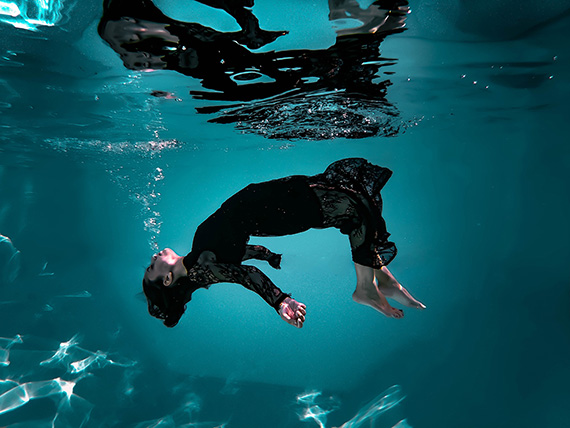
Photo by Francesca Zama
Q3 – OK, I’ve Narrowed Down My Choices, Which Features Are Critical?
A3 – Great! Generally, look for these critical specifications and features:
- Waterproof Depth – Naturally, you’ll need to know how deep you can bring your camera underwater. Normally, underwater digital cameras can go as deep as 8-10 feet without the need of a dedicated underwater case. Some higher-end models are rated up to 33 feet. Does higher mean better? In general, yes as it means the camera’s seals are more robust. However, remember your intended purpose, if you’re only using the camera for treks, skiing, backyard pools and such, then the standard 8-10 feet specification is more than enough!
- Image Stabilization – You’ve decided to buy a rugged camera, so expect to use the camera in less-than-stable conditions! Having in-camera, lens-based stabilization helps TREMENDOUSLY when you’re shooting underwater or in motion.
- Battery Life – Odds are high that your new waterproof camera will be a frequent companion in your outdoor activities, and being outdoors mean you won’t have access to electric outlets for charging. When shooting underwater, odds are high that you’ll be using your in-camera flash often, which drains your battery even faster, so make sure you choose a camera that has a battery life of at least 150-200 shots per charge. The higher, the better.
- Focal Length (Zoom Range) and Macro – The key spec here to check is how wide the lens can go and how close you can focus. It’s best to get a camera that has a wide angle focal length of 24mm or 28mm at its wide end, no more than 35mm at its widest. In terms of macro, the closer it can focus, the better, but a closest focus distance between 3cm to 10cm (1 to 4 inches) is sufficient.
- Temperature Limit – Choose a camera that can withstand AT LEAST freezing temperature (0 degrees Centigrade), ideally, -8 degrees Centigrade or lower is ideal.
- Impact Resistance – This shouldn’t be a big issue as almost all cameras in this category are very rugged. The camera bodies are often made of metal with suitable rubber padding and impact-resistant features inside the camera anyway. Just make sure the overall size and weight are acceptable to you.
Q4 – When and Where Should I Buy An Underwater Camera?
A4 – The ideal time to purchase an underwater camera in most countries is during spring, just before summer.
Normally, new models come out just before summer and you can purchase the current model at a discount as manufacturers promote their newer (usually just a minor update of the current) model.
In my experience, these specialty cameras aren’t has heavily promoted in physical camera stores and they offer less appealing offers compared to online purchases. Online has the advantage as their prices are updated in real-time and face greater competition and attention than physical stores therefore, greater discounts.
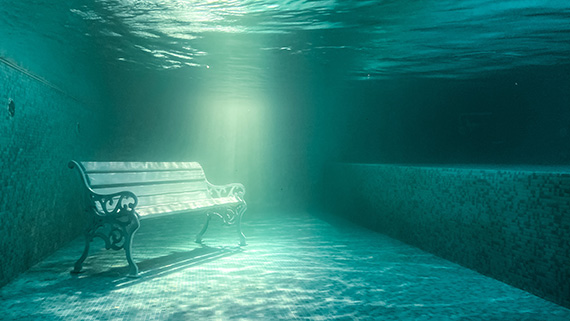
Photo by Shivam Singh
Q5 – Yey! I Bought My First Waterproof Camera, Now What?
A5 – Now You take pictures! You must go through the user manual and study what each of those buttons do and which features you’ll be using most of the time. There’s nothing worse than trying to fiddle with camera controls when a once-in-a-lifetime scene or moment is right in front of you.
Q6 – The Image Quality of My Waterproof Camera Seems Poorer Than My Other Digital Camera, Is My Camera Defective?
A6 – In many cases, this is true. Because of the protection required for the sensitive electronics and optics, these underwater digital cameras have to shoot through a layer of protective glass all the time.
The images may not be as sharp or contrasty as your normal digital camera, but they’re more than acceptable unless you’re sending the photos to National Graphic. Keep in mind that your normal camera can’t even take a single photo underwater!
Q7 – I’m Still Uneasy About Using An Electronic Device Underwater, How Do I Test If My Underwater Camera For Defects and Leaks?
A7 – Just use your camera as you intended to use it! Bring the camera underwater, drop it in the snow, leave it in your bathtub, flush it down the toilet (NOT ADVISABLE!), the important thing to remember is test your camera BEFORE your exchange and warranty period lapses.
As long as your camera is still under warranty, you can have your camera replaced or exchanged, so it’s important to find out if there’s a defect with the camera’s seals before your warranty runs out.
Q8 – Why Do Waterproof Cameras Have Depth Rating and How Long Can I Use The Camera Underwater?
A8 – Your underwater camera has rubber seals and metal locks that seal off water and debris, however, as you go deeper underwater, the pressure builds and the pressure can push these seals out-of-place and destroy the camera, so it’s critical that you stay above the depth limit of your camera at all times.
In terms of how long you can use the camera underwater, each model has a different specification, so check your user manual to be sure.
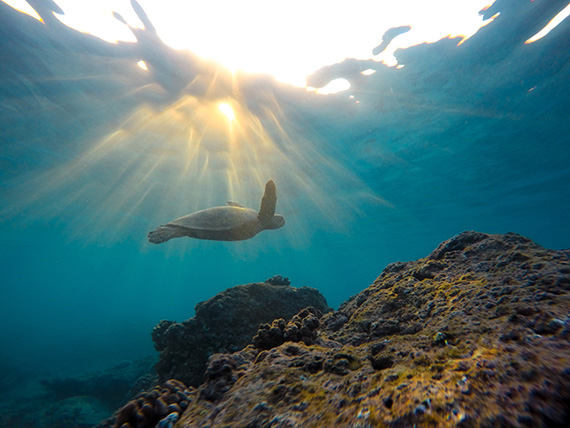
Photo by Jeremy Bishop
The main reason is pressure. While your camera can withstand 10 feet of water depth, for example, the constant pressure at 10 feet is different to the pressure at 5 inches of water, the stress on the camera’s seals are higher in deeper water so you have to be mindful of how long the camera has been submerged.
Q9 – Woohoo! It’s Still Working! What Must I Do To Keep This Wonderful Waterproof Camera Working Perfectly?
A9 – Alright! Now just because the camera’s rugged and waterproof, it doesn’t mean that you can leave it uncared for all the time.
Remember that sea water, ice, swimming pool water, mud, and dirt all have different corrosive stuff in them, so make sure you give your camera a good rinse under clean water and dry it before storage.
Oh, do not put your camera in a dishwasher, for crying out loud!
Q10 – I Heard That Underwater Photography Is Different From “Dry Land” Photography, Any Simple Underwater Photography Tips?
A10– It is, mainly because of how light waves are altered by the rippling water and the distortion water creates on images.
Here are some easy tips in shooting underwater.
- All things being equal, there’s considerably less light underwater, so expect to use a longer exposure or use flash, but be careful with flash usage (see below).
- Get close to your subject. Due to the physical characteristics of water, the smaller the distance between the lens and your subject, the better the details. You’ll get less distortion due to water movement, less stray light from reflective waves, you’ll capture less contaminants floating in water in your photos as well.
- When using flash underwater, particularly in deeper, darker waters, you’ll see a lot of white floating dots in your photos as the light reflects off underwater particles like sand and dust. Minimize this by shooting in better light or close proximity to your subject.
- Try to position yourself LOWER than your subject, meaning, you shoot towards the surface. This usually creates an ethereal backdrop for your subject as the surface of the water will always be brighter.
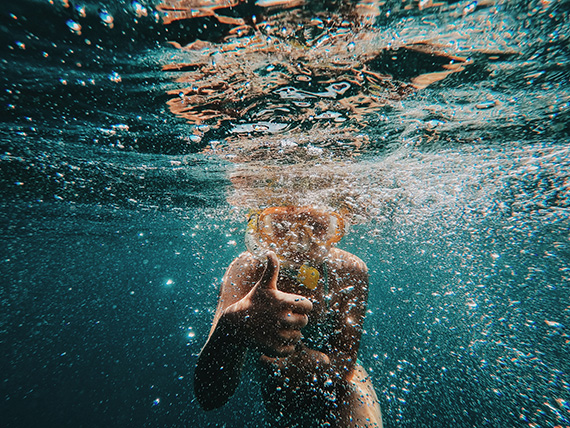
Photo by Timo Wagner
I hope you found this article about how to buy your first underwater and waterproof digital camera helpful. I’ve included some recommended camera models for you to choose from so you can get started with your outdoor photography adventures! Trust me, once you get used to having a rugged, go-anywhere camera, you’ll never leave home without it!
About the Author:
There are so much more free photography tips and lessons available at David’s Simple Photography for you to learn fundamental and techniques in digital photography and flash photography, you’ll be confident to take any kind of photographs in any situation with any camera you currently have. I strongly urge you to discover these free and useful lessons for free!
David is a freelance photographer, blogger, and writer providing quality and free photography-related tutorials, camera reviews, and Adobe Photoshop tips through his blog and workshops.
Like This Article?
Don't Miss The Next One!
Join over 100,000 photographers of all experience levels who receive our free photography tips and articles to stay current:






Question 7 and answer 7 caught my attention, the answer in particular. I like the straight forwardness in the answer, straight to the point, if you buy an underwater camera, use it as it was intended to be used. If a company promises a product is water proof assume it is, if there by chance is a leak or defect then the company is responsible and should take responsibility, but you should do it before the warranty runs out.
Great post to read, I especially loved the part where you talked about capturing memories at the beginning of the post. Information is broken down very well and makes for an excellent guideline to select a waterproof digital camera.
useful tips in there… colour correct in lightroom for my underwater stuff…